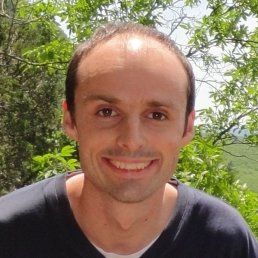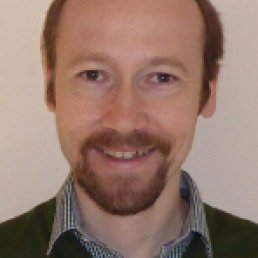Prizes 2024

Prof. Alain Goriely
The Engineering Science Medal was awarded to Alain, 'for seminal contributions to the mechanics of growth and nonlinear anelasticity, with applications to engineering, biology, physiology, physics, and materials science.'
Prizes 2023
Professor Ian Griffiths
Winner of the 2023/24 MPLS Award for Outstanding Research Supervision. One of eleven research group leaders in departments across the Division have received awards for going above and beyond in nurturing and supporting their colleagues, by demonstrating inspirational leadership and enabling people to flourish in their careers. https://www.mpls.ox.ac.uk/latest/news/winners-of-the-2023-mpls-awards-for-outstanding-research-supervision-announced
Professor Radek Erban
The Keynote Presentation Award at the ACM NanoCom 2023 was given to Professor Erban. Prof. Erban's keynote was on the multi-resolution simulations at the nanoscale, a class of new computational methods which enable mathematical modelling and computational simulations. Multi-resolution methods improve accuracy of computations, because they take into account detailed information on the structure and function of biomolecules, like DNA and proteins, and they enable simulations of larger biomedical systems than traditional methods. They have been developed by Prof. Erban and his collaborators, who are based in the US, Japan, Germany, Sweden and Australia.
Matthew Cotton
Contribution to the Department award for organising the biweekly Junior Applied Mathematics Seminar (JAMS), as well as setting up and running the 3-Minute Thesis competition. Matthew is a key presence in the department in helping with prospective students, hosting visiting students, and helping out at Graduate Open Day.
Arkady Wey
A Multiscale Model for Filtration
- Gold prize-winner STEM FOR BRITAIN 2023 STEM Gold Arkady Wey_0.pdf
- Winner of the SIAM-IMA 3-minute thesis competition
Oliver Bond
Liquid metal behaviour inside a tokamak fusion reactor
- Finalist STEM FOR BRITAIN 2023 STEM Finalist Oliver Bond.pdf
Georgia Brennan
Mathematically Modelling Clearance in Alzheimer's Disease
- Silver prize-winner STEM FOR BRITAIN 2021
- BMC/BAMC Poster Prize Winner 2021
- Winner TAKE AIM 2020
Mankind faces an aging crisis with Alzheimer's disease (AD) at the forefront. Clinical literature increasingly points to the connection between AD and the failure of the brain's ability to remove dangerous waste proteins with age. My research focus is to develop an understanding of how clearance deficits can play a formative role in AD. I am developing the first mathematical, data-driven, network models coupling the clearance of toxic proteins and AD progression. Our groups accessible research software enables clinical researchers to harness key mathematical insights for experimental research and treatment, producing simulations for the spread and dynamics of AD over 40 years in a matter of seconds.
Meredith Ellis (Oxford)
Predictive models of metabolite concentration for organoid expansion
- BMC/BAMC 2021 Poster Prize Winner Ellis_Meredith.pdf
Organoids are three-dimensional multicellular structures, which are grown in vitro and successfully recapitulate in vivo tissue-specific structure, heterogeneity, and function. Organoid culture is an increasingly relevant technology in biomedical research, with applications in drug discovery and personalised medicine. We are working in collaboration with the biotechnology company Cellesce, who develop bioprocessing systems for the expansion of organoids at scale. Part of their technology includes a bioreactor, which utilises flow of culture media to enhance nutrient delivery to the organoids and facilitate the removal of waste metabolites. A key priority is ensuring uniformity in organoid size and reproducibility; qualities that depends on the bioreactor design and operating conditions. A complete understanding of the system requires knowledge of the spatial and temporal information regarding flow and the resulting oxygen and metabolite concentrations throughout the bioreactor. However, it is impractical to obtain this data empirically, due to the highly-controlled environment of the bioreactor posing difficulties for online real-time monitoring of the system. Thus, we exploit a mathematical modelling approach, to provide spatial as well as temporal information.
In the bioreactor, organoids are seeded as single cells in a thin layer of hydrogel which acts as a porous scaffold. Media is pumped across the top of the hydrogel layer. We wish to identify the optimal flow rate to ensure sufficient delivery of nutrient and removal of waste metabolites. We present a general model for the nutrient and waste metabolite concentrations in the bioreactor. We exploit the slender geometry of the domain and use an asymptotic approach to derive a long-wave approximation of the system. This reduced-order model accounts for the depth-averaged flow, nutrient uptake, and waste metabolite production, and is more analytically tractable.
We explore the behaviour of the long-wave approximation and full system using both analytical and numerical approaches.
Hadrien Oliveri
An optic ray theory for nerve durotaxis
- Prize Winner for best ECR presentation, 6th Oxford International Neuron and Brain Mechanics Workshop
During the development of the nervous system, neurons extend bundles of axons that grow and meet other neurons to form the neuronal network. Robust guidance mechanisms are needed for these bundles to migrate and reach their functional target. Directional information depends on external cues such as chemical or mechanical gradients. Unlike chemotaxis that has been extensively studied, the role and mechanism of durotaxis, the directed response to variations in substrate rigidity, remain unclear. We model bundle migration and guidance by rigidity gradients by using the theory of morphoelastic rods. We show that at a rigidity interface, the motion of axon bundles follows a simple behavior analogous to optic ray theory and obeys Snell’s law for refraction and reflection. We use this powerful analogy to demonstrate that axons can be guided by the equivalent of optical lenses and fibers created by regions of different stiffnesses.
Joe Roberts
Modelling the Carding of Recycled Carbon Fibre
- Winner BMC/BAMC Poster Competition 2021Roberts_Joe.pdf
The many potential applications and properties of carbon fibre mean that the demand for it has increased in recent years. This means that the amount of waste carbon fibre is increasing. This waste can be recovered and turned into non-woven materials for use in industry. One step in this process is the carding of carbon fibres using carding machines, which are also used in the textile industry. Carding machines consist of a set of toothed rollers of different sizes, moving in different directions and at different velocities, with the aim of producing a web of aligned fibres. In this study, a continuum model is derived for carbon fibres moving through a carding machine, considering different regions of the machine. We examine properties such as the density and order of fibres through the machine, and look at the role of hooks in the combing of the fibres. The aim of this work is to make the process of producing a web of aligned fibres more efficient by examining the properties of the machine.
Arkady Wey
The Contamination Crisis and a Filtration Fix
- Winner Smith Institute TAKEAim - 2nd PrizeArkady_Wey.pdf
At University of Oxford, we are collaborating with WL Gore & Associates to derive a probabilistic mathematical model that predicts contaminant removal and clogging in their specialized filtration material. By experimenting with the pressure and flow-rate of the incoming water, and the pore structure and geometry of the material, we are developing an optimal filtration regime that maximizes the volume of contaminated water that can be filtered before clogging. Furthermore, we are building computational simulations of our model to maximize filtration efficiency and thus minimize energy wastage. Our optimization will decrease the cost of contaminant removal, which will hopefully ultimately lead to increased accessibility of clean water to those who need it most.



